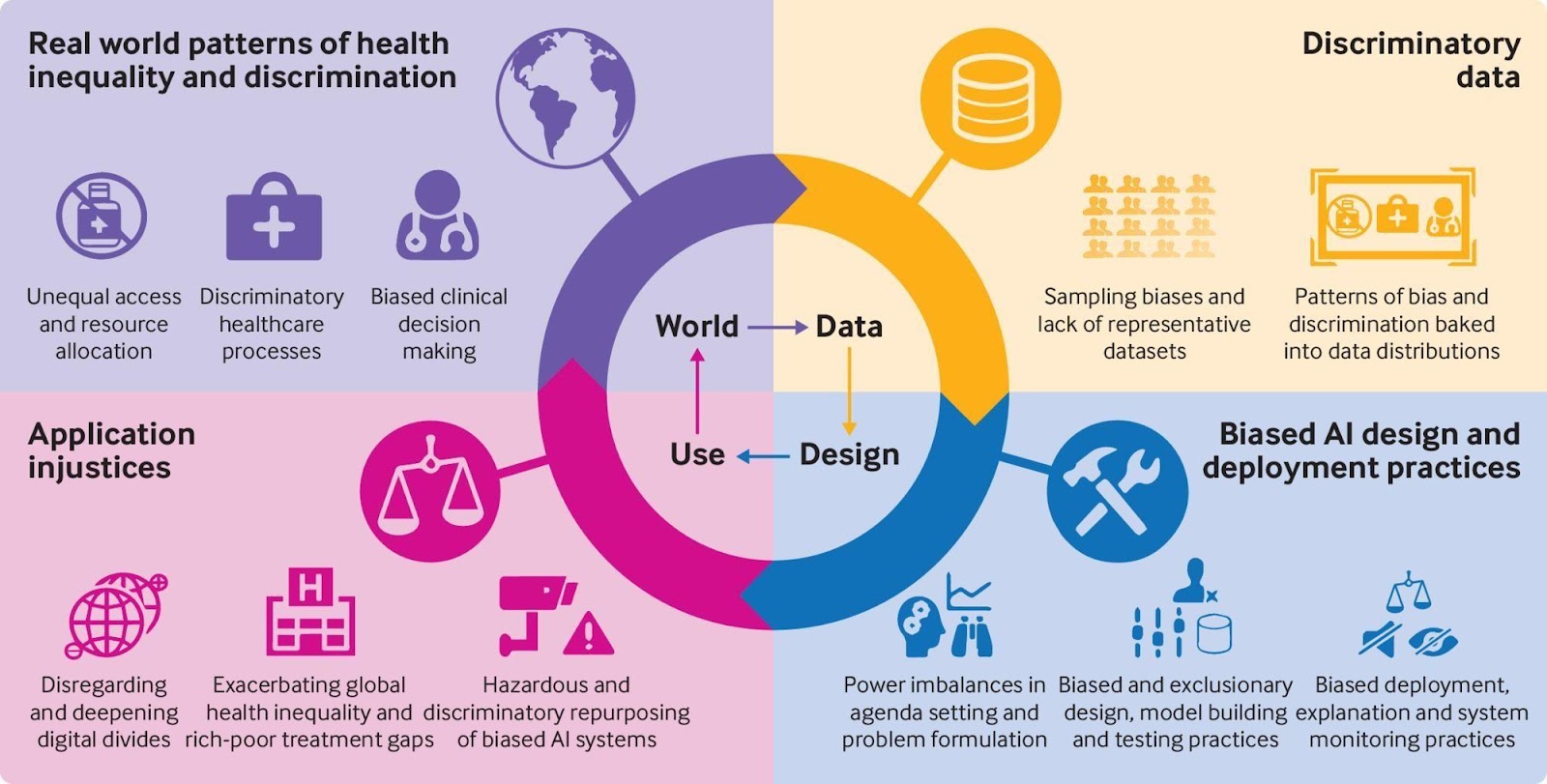Introduction
Lending discrimination is a form of unfair treatment based on characteristics such as race, gender, ethnicity, or socioeconomic status when it comes to accessing loans or credit. It is a pervasive issue that continues to impact individuals and communities, perpetuating disparities and hindering economic progress.
Discrimination in lending can take on various forms, each with its own detrimental effects. Understanding these types of lending discrimination is crucial in addressing the systemic inequalities that exist within the financial industry. By raising awareness and implementing measures to combat it, we can work towards a more equitable society.
In this article, we will explore the three main types of lending discrimination: redlining, steering, and predatory lending. By examining these practices, we can gain a deeper understanding of the challenges individuals face in accessing equal opportunities when it comes to obtaining credit or loans.
It is important to note that lending discrimination not only affects individuals, but it also has wider ramifications on communities and the economy as a whole. By denying certain groups access to credit or imposing unfair terms, we create a cycle of limited opportunities, reinforcing existing disparities and inhibiting economic growth.
Now, let’s delve into each type of lending discrimination and explore their characteristics, impact, and potential solutions:
Type 1: Redlining
Redlining is a practice that involves denying or limiting access to financial services, such as loans or mortgages, to individuals and communities based on their geographical location. This discriminatory practice was prevalent in the mid-20th century but continues to have lasting effects today.
The term “redlining” originated from the literal red lines drawn on maps by lenders and government agencies to designate neighborhoods with predominantly minority residents. These areas were deemed high-risk and were systematically denied access to credit or offered loans with unfavorable terms.
By denying financial resources to certain communities, redlining perpetuated poverty, limited investment opportunities, and contributed to the deterioration of neighborhoods. The effects of redlining can still be seen today in the form of segregated communities and limited economic mobility.
Redlining not only impacted individuals but also had far-reaching consequences for businesses and community development. The lack of access to loans made it difficult for small businesses to thrive or expand, further exacerbating the economic disparities.
Efforts to combat redlining have been made over the years through legislation such as the Fair Housing Act and the Community Reinvestment Act. These acts aim to encourage banks and financial institutions to invest in underserved communities and provide equal opportunities for credit.
In recent years, there has been an increased focus on addressing the lingering effects of redlining through community development initiatives, affordable housing programs, and efforts to increase financial literacy in marginalized communities.
To effectively combat redlining, it is crucial to promote fair lending practices, hold financial institutions accountable for their actions, and ensure that individuals and communities have fair and equal access to credit and loans, regardless of their geographical location.
Type 2: Steering
Steering is another form of lending discrimination that occurs when individuals are directed towards specific loan products or terms based on their personal characteristics, such as race, gender, or ethnicity. This practice often leads to individuals being steered towards higher-cost loans, irrespective of their creditworthiness.
Financial institutions engage in steering by using various tactics to exploit vulnerabilities and biases. They may target certain communities or individuals with predatory lending practices, misleading information, or by offering loan products with unfavorable terms.
One of the ways steering manifests is through the targeting of minority communities with subprime mortgages. These mortgages, characterized by higher interest rates and fees, often exploit individuals who may not fully understand the terms or consequences. As a result, individuals end up paying more for their loans than their creditworthiness would normally warrant.
Steering not only impacts individuals financially, but it also contributes to wealth disparities and perpetuates systemic inequality. Minorities and marginalized communities are disproportionately affected, leading to a widening wealth gap and limited opportunities for economic advancement.
Attempts to address steering have been made through legislation, such as the Home Mortgage Disclosure Act and the Dodd-Frank Wall Street Reform and Consumer Protection Act, which aim to promote transparency, accountability, and fair lending practices in the mortgage industry.
To combat steering effectively, it is crucial to educate and empower individuals with financial literacy and knowledge of their rights. By being informed consumers, individuals can make more informed decisions about loan products, effectively challenge discriminatory practices, and seek out fair and equitable lending options.
Financial institutions also play a critical role in combating steering by ensuring that their loan officers and staff are trained to provide unbiased information and assistance to all applicants. By promoting fair lending practices within their organizations, institutions can help prevent steering and promote equal access to credit for all individuals.
Type 3: Predatory Lending
Predatory lending is a type of lending discrimination that involves deceptive, unfair, or exploitative practices by financial institutions or lenders. This practice often targets vulnerable individuals, such as low-income borrowers or those with limited financial knowledge, and exploits them for financial gain.
One common form of predatory lending is the offering of high-interest loans to borrowers who may not qualify for traditional loans due to their credit history or income level. These loans often come with exorbitant fees, hidden charges, and complex terms that borrowers may not fully understand. As a result, borrowers can find themselves trapped in a cycle of debt with little hope of repayment.
Other examples of predatory lending include payday loans, car title loans, and high-cost refinance loans. These loan products target individuals in need of immediate cash but often come with excessively high interest rates and fees. The repayment terms can be difficult to meet, leading borrowers into a cycle of continuous borrowing and financial instability.
Predatory lending not only causes financial harm to individuals but also contributes to the erosion of communities and exacerbates wealth inequality. Borrowers who fall victim to predatory lending often face foreclosure, bankruptcy, or are forced to rely on social assistance programs, further straining their finances and the resources of their community.
Efforts to combat predatory lending include the implementation of consumer protection laws, such as the Truth in Lending Act and the Consumer Financial Protection Bureau’s regulations. These laws aim to increase transparency, require lenders to disclose all loan terms, and provide borrowers with the necessary information to make informed decisions.
Education and financial literacy programs are also essential in combating predatory lending. By empowering individuals with the knowledge and skills to navigate the lending landscape, they can better understand their rights, identify predatory practices, and seek out safer and fairer loan options.
Additionally, increased regulation and enforcement of existing consumer protection laws are crucial. Financial institutions and lenders must be held accountable for their actions, and strict penalties should be imposed on those found engaging in predatory lending practices.
By addressing predatory lending, we can protect vulnerable individuals, promote financial stability, and work towards a more equitable lending environment.
Conclusion
Lending discrimination, in its various forms, remains a significant issue that hinders equal access to credit and perpetuates systemic inequalities. The three main types of lending discrimination—redlining, steering, and predatory lending—highlight the complex challenges that individuals and communities face when it comes to obtaining loans or credit.
Redlining, a historical practice that continues to have long-lasting effects, denies individuals and communities access to financial services based on their geographical location. This perpetuates poverty and limits economic opportunities, creating disparities that are difficult to overcome.
Steering, on the other hand, directs individuals towards specific loan products or terms based on personal characteristics, resulting in higher-cost loans and widening the wealth gap. Educating and empowering individuals, as well as promoting fair lending practices in financial institutions, can help address this discriminatory practice.
Predatory lending is a particularly harmful form of lending discrimination that preys on vulnerable individuals through deceptive and exploitative practices. By offering high-interest loans with hidden fees and complex terms, predatory lenders trap borrowers in cycles of debt and perpetuate financial instability.
To effectively address lending discrimination, a multi-faceted approach is required. Legislation and regulation play a crucial role in promoting fair lending practices and holding financial institutions accountable for their actions. Increased transparency, protections for consumers, and penalties for predatory lending are essential steps in creating a more equitable lending environment.
Furthermore, education and financial literacy initiatives are instrumental in empowering individuals to make informed decisions and challenge discriminatory practices. By equipping individuals with the knowledge to navigate the lending landscape, we can help mitigate the risk of falling victim to predatory lending and other forms of discrimination.
It is crucial that the fight against lending discrimination continues with unwavering commitment. By working together to address these systemic issues, we can create a financial system that provides equal opportunities for all individuals, regardless of their race, gender, ethnicity, or socioeconomic status.
Through strategic interventions and collective efforts, we can foster a more inclusive and equitable society in which everyone has fair and equal access to credit and loans.

























